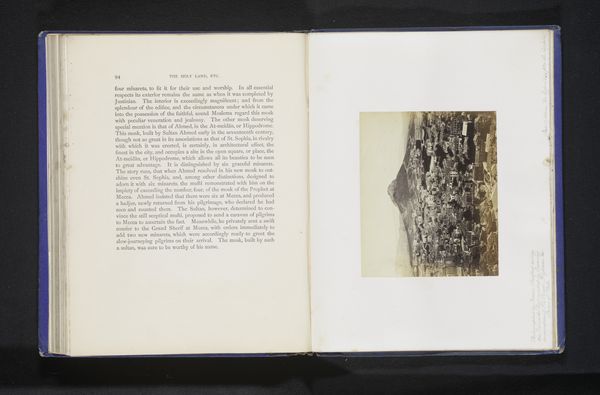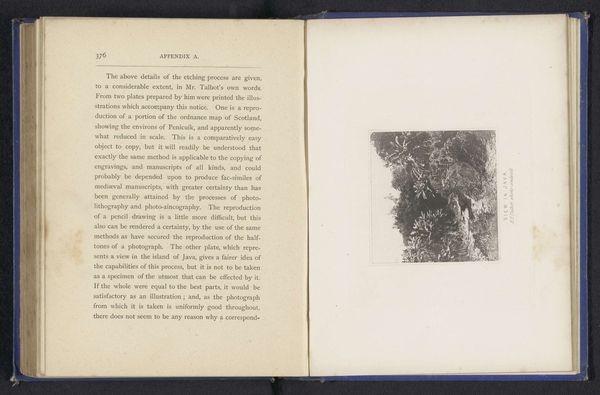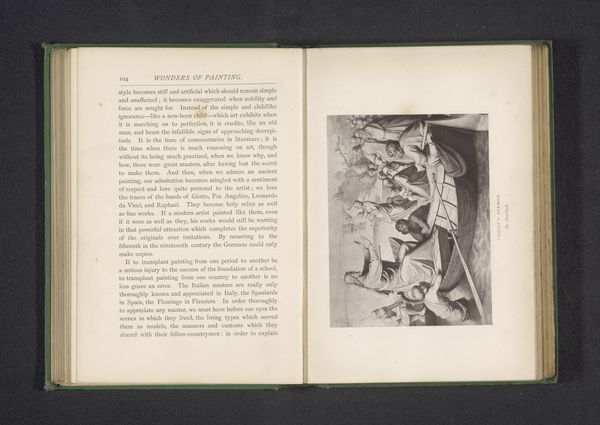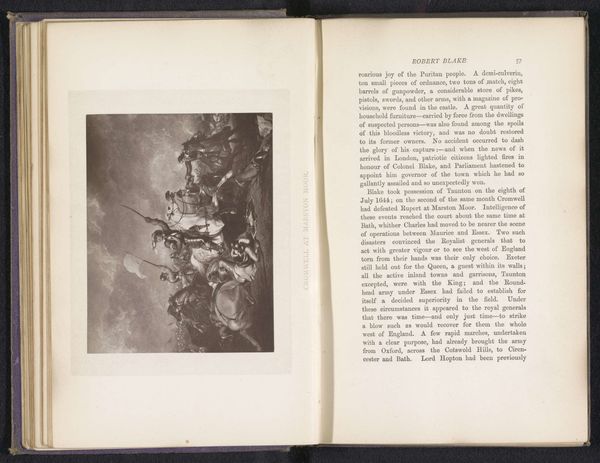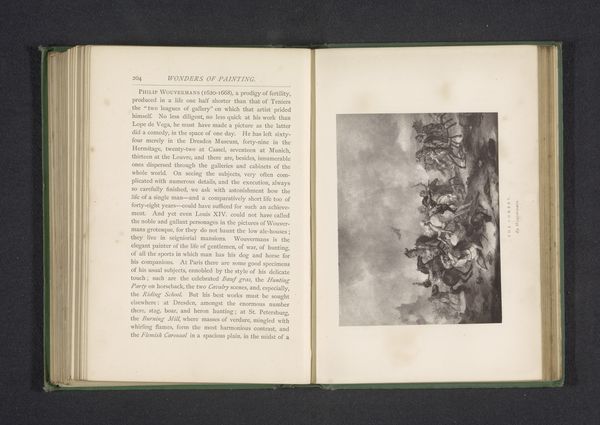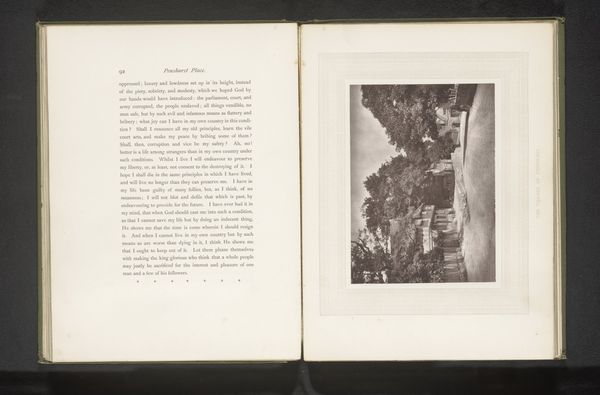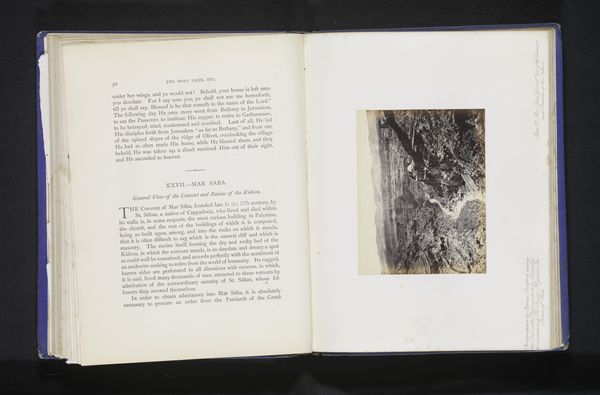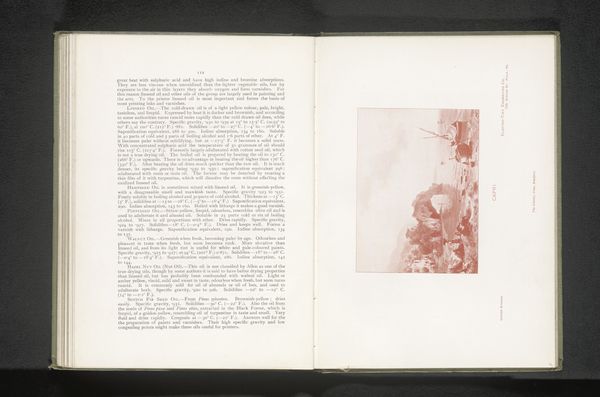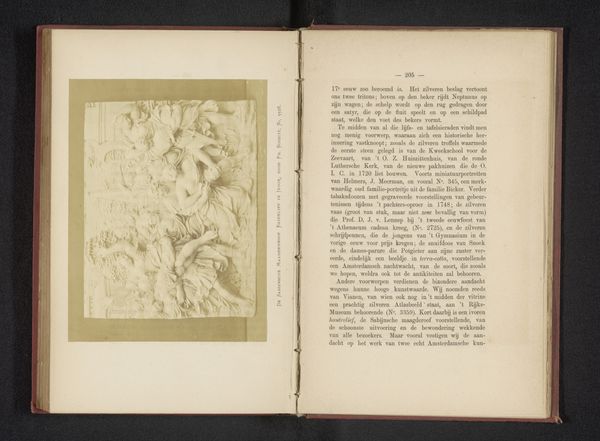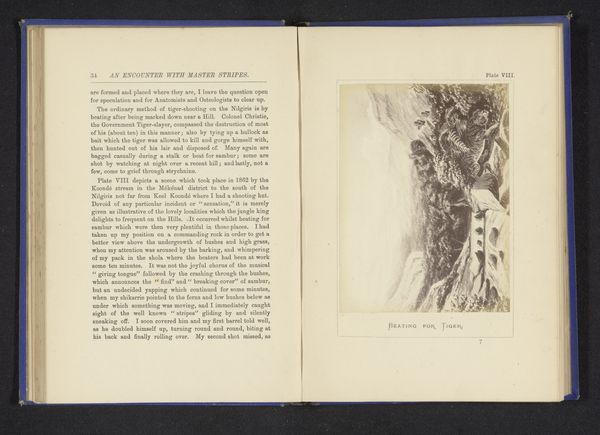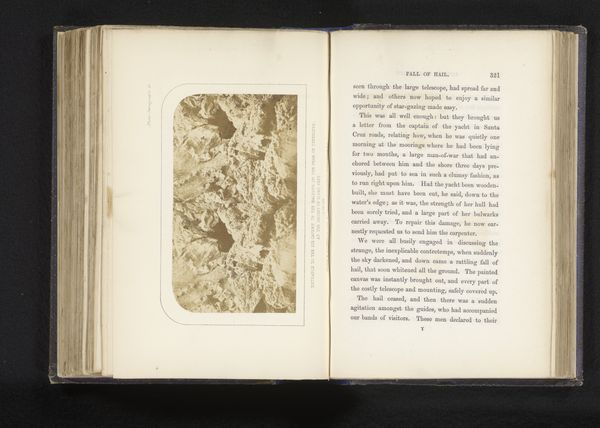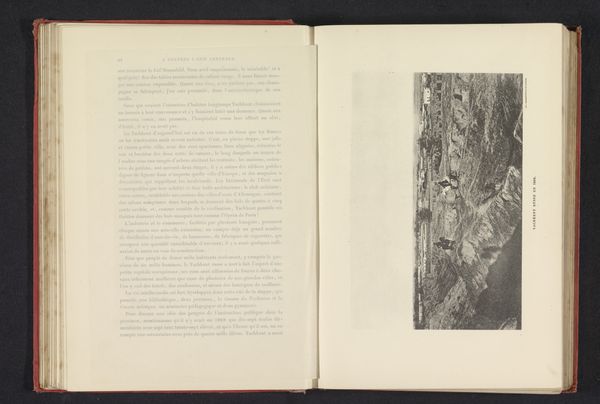
print, paper, photography
# print
#
book
#
landscape
#
paper
#
photography
Dimensions: height 90 mm, width 116 mm
Copyright: Rijks Museum: Open Domain
Editor: Here we have "Soudan souvenirs" created before 1875, currently residing in the Rijksmuseum. It looks like a photograph reproduced in a book. The image is a bit chaotic, full of artifacts, weapons, and objects. What strikes me is how it seems to fetishize these… souvenirs. What’s your take on this? Curator: Well, seeing this through a historical lens, it speaks volumes about the colonial gaze. "Soudan souvenirs" implies ownership, doesn’t it? It frames the Sudanese culture as something to be collected and possessed. Editor: I see your point. So, it's not just a depiction, but a statement about power? Curator: Precisely. Photography, especially in the 19th century, served as a powerful tool for documenting and therefore legitimizing colonial expansion. The act of photographing these objects and calling them “souvenirs” flattens the Sudanese culture into a series of consumable items, divorced from their original context and meaning. What kind of audience was intended for this book? Editor: Probably Europeans who had never traveled to the region. Curator: Exactly. It's feeding a certain narrative about the exotic "other" and solidifying the West’s perceived superiority. This photograph, within the book, helped shape and reinforce public opinion regarding colonialism. It normalized the exploitation by visually "packaging" it for easy consumption. What did you find particularly "chaotic"? Editor: It is all crammed in one photo without concern for clarity of presentation of each object. Curator: A lack of context and no intention for historical preservation. It’s just another souvenir. It seems there are a lot more stories hidden behind each weapon and piece of jewelry that we will never know. Editor: It makes me think differently about the role museums play today in decolonizing their collections. Curator: Absolutely. Recognizing the politics of imagery, as seen in works like this, is essential to responsible historical interpretation.
Comments
No comments
Be the first to comment and join the conversation on the ultimate creative platform.
